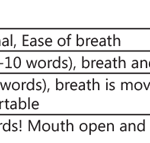

At SportsGadgets.co.uk we believe in the benefits of HIIT, and are proud to supply equipment and guidance on how to get the best out of it. Here, our blog contributor and marathon runner Andy Glass shares some if his first-hand experiences and thoughts on the subject, starting with the basics…What is “HIIT”?HIIT is an abbreviation for High Intensity Interval Training. It’s not new, back in the old days we runners used to call them “fartleks”, but I guess I can see why that name was never going to become fashionable.However, as heart rate monitor training experiences a growth in popularity (not least due to the availability of low cost and accurate heart rate monitors) there is a more interest in the benefits of training in the different “heart rate zones”, which has put a spotlight on HIIT.This is a good thing. I write as a keen and vocal advocate of HIIT.Mile 25See, once upon a time there was this girl from my running club who told me about the brilliant speed training sessions she’d been going to at the local athletics track. Sounds good, I thought. I can’t claim to have had entirely honourable intentions, but to cut a long story short we’ve been an item for 14-months, and I’ve never been a better or faster runner than I am right now. In the last year I’ve blitzed PB’s in every race distance I’ve entered. I recently knocked 12-minutes off my marathon time, missing out on the holy grail of a sub-3hr by just two minutes.HIIT has unlocked speed I never knew I had. What does HIIT involve?As the name suggests, High Intensity Interval Training involves short bursts of hard and strenuous exercise, followed by a brief period of rest to recover, and then repeat until your lungs feel like exploding.In our case this involved 2 to 4 minutes of running at speed around a track, with up to 60 seconds to recover. This would be broken into two or three sets of maybe 4-6 reps, with perhaps a longer recovery period of 5 mins in between. The torture would eventually come to an end after 50 minutes or so, accompanied by a strange sense of well-being and a deep rooted conviction that “we’ve earned that pizza now”.Who would benefit from HIIT?In short, anyone. It’s a lot to put your body through, so I wouldn’t recommend commencing a high intensity exercise program without establishing a good level of underlying fitness first. However, it is a great way to “move up to the next level”, and perfect for those that love to feel the burn…HIIT is far from the preserve of runners, it’s applicable to most forms of sport where improved endurance, strength, stamina and speed are beneficial. And who says you have to be playing sport to benefit? The improvements in fitness, muscle tone and general conditioning can be enjoyed by anyone!I know a few self-styled fitness buffs that are actually a little bit scared of proper hard work; they safely plod along in their comfort zone whilst telling themselves they are working hard. It’s common sense to me that the body will improve in proportion to the amount of stress we put upon it – put the work in, get the results out.Get ripped… look younger…I’m sorry for that cheesy subheading, however, for once I don’t think it’s a vacuous claim. I’ve never believed in shortcuts, and HIIT is not one. It’s hard work. But I believe it’s efficient and effective hard work for the results you can achieve.Through high intensity training, your body adapts to become more efficient at producing and using energy. You burn more calories during an HIIT session than you would with a gentle workout, and this continues long after you’ve finished.By forcing your muscles to work harder, you cause microscopic tears in the muscle fibre. Your body will repair this “damage” whilst you are resting and recovering, which burns calories (and fat). As this process continues your muscles will grow, your body fat reduces, and you look more toned and defined.It is this on-going cycle of rejuvenation that’s behind the “look younger” claim too. There are far too many self-propagating myths on the internet already about this topic, and apologies for adding to it, but speaking as a natural born cynic this one makes logical sense to me,The key to HIIT is getting your heart beating fast enough!High Intensity Interval Training is a perfectly descriptive name. The high-intensity bit refers to your heart rate – and you need to be pushing it up close to it’s maximum for short intervals.This is where you smart phone can help
Originally from:
Sports Gadgets » What is HIIT? – Sports Gadgets.co.uk



















 For now classes are 6pm and 640pm at 2840 Wildwood st in the Boise Cloggers studio.
Book your class NOW!
click this ==>
For now classes are 6pm and 640pm at 2840 Wildwood st in the Boise Cloggers studio.
Book your class NOW!
click this ==>








